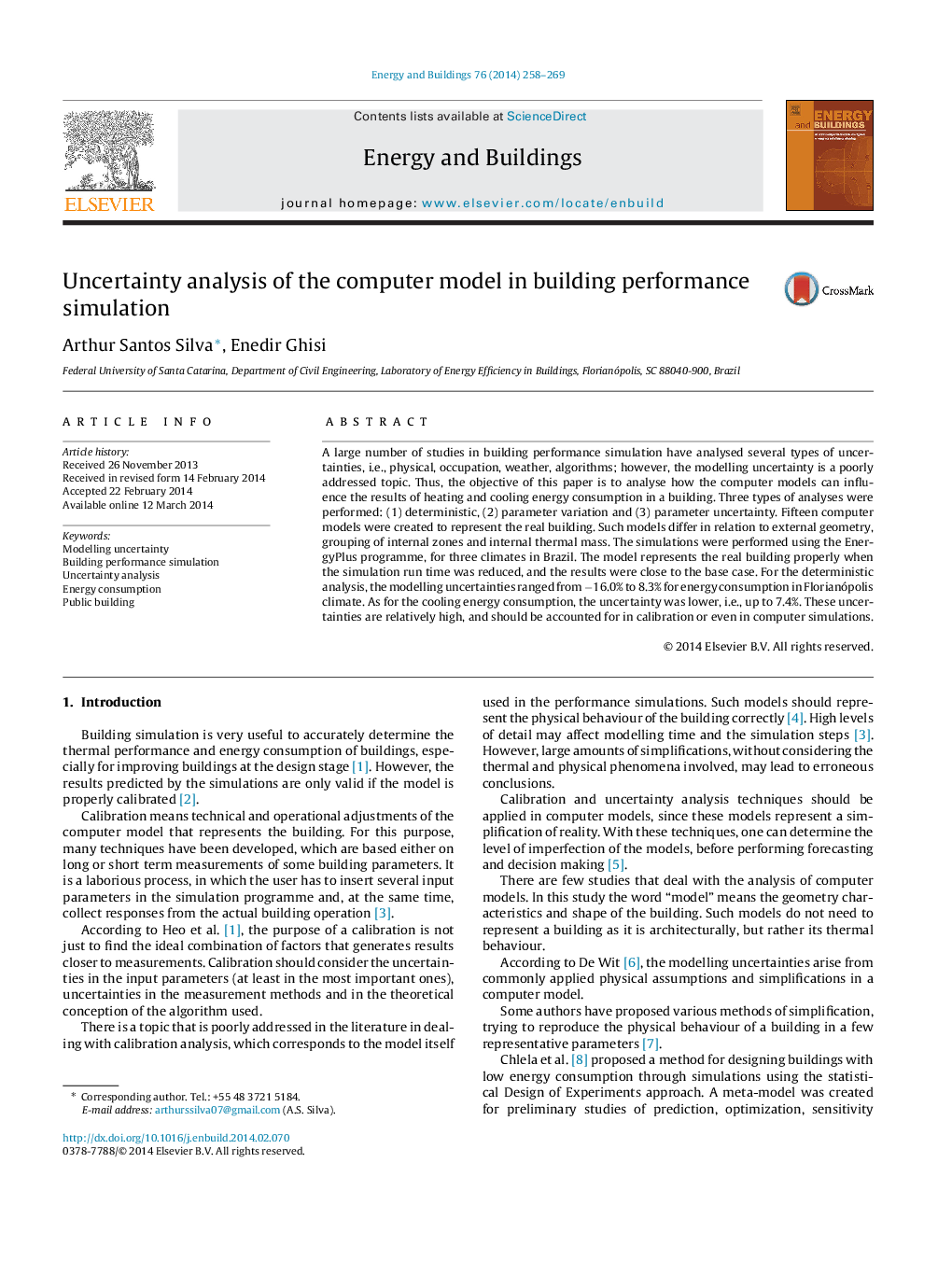| Article ID | Journal | Published Year | Pages | File Type |
|---|---|---|---|---|
| 6733718 | Energy and Buildings | 2014 | 12 Pages |
Abstract
A large number of studies in building performance simulation have analysed several types of uncertainties, i.e., physical, occupation, weather, algorithms; however, the modelling uncertainty is a poorly addressed topic. Thus, the objective of this paper is to analyse how the computer models can influence the results of heating and cooling energy consumption in a building. Three types of analyses were performed: (1) deterministic, (2) parameter variation and (3) parameter uncertainty. Fifteen computer models were created to represent the real building. Such models differ in relation to external geometry, grouping of internal zones and internal thermal mass. The simulations were performed using the EnergyPlus programme, for three climates in Brazil. The model represents the real building properly when the simulation run time was reduced, and the results were close to the base case. For the deterministic analysis, the modelling uncertainties ranged from â16.0% to 8.3% for energy consumption in Florianópolis climate. As for the cooling energy consumption, the uncertainty was lower, i.e., up to 7.4%. These uncertainties are relatively high, and should be accounted for in calibration or even in computer simulations.
Keywords
Related Topics
Physical Sciences and Engineering
Energy
Renewable Energy, Sustainability and the Environment
Authors
Arthur Santos Silva, Enedir Ghisi,
